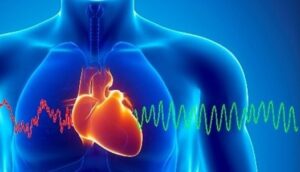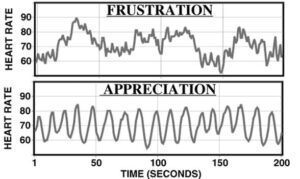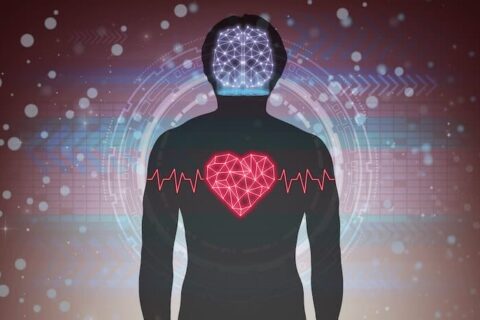A Simple Way to Reduce Stress

Over the past few years, we have all experienced significant amounts of stress from many stressors we were unprepared for. There has not been much guidance offered to us on how to deal with this now chronic state of stress we have had to endure. Medical research estimates as much as 90 percent of illness and disease is stress-related. It is the major cause of anxiety and depression, and significantly contributes to heart disease, diabetes, IBS, sleep disturbance, elevated blood sugar, hypertension and tension headaches, in short, it is a primary risk factor of all the major co-morbidities people suffer from in our country. Stress reduction techniques are helpful but most provide temporary palliation and are not always accessible in the middle of a acute stress. As an evidence based physician, I look for recommendations for the health of my patients that are supported by scientific evidence. The following technique for stress reduction I explain in this article is called The Quick Coherence Technique (QCT), developed by The HeartMath Institute. It is a quick, easy and evidence based method to offset the negative effects of acute and chronic stress on the body.
Let me first give you some background about the Electrical System of our body to help you understand how and why this technique works. I have excerpted and paraphrased a section from my book Becoming Real, to explain our body’s electrical system and also the effect of the QCT on this system resulting in a positive physiological effect in our body.
The electrical system is the part of the body that regulates and affects the heart rhythm (the cardiovascular system), the muscular, and nervous systems. We can measure the electrical activity of these systems with diagnostic medical tools. We measure the heart rhythm with an electrocardiogram (EKG), the electrical activity of muscles with an electromyogram (EMG), and nerve impulses with an electroencephalogram (EEG). The electrical system is both electrical and magnetic.
The electrical system generates the electromagnetic field surrounding the Physical body. This field can be measured up to eight feet in diameter with a galvanometer, a device used to measure electrical currents. The electrical activity of the body is affected by the experience of trauma and shock (caused by stressors) as well as feelings of happiness, joy, and love.
The HeartMath Institute has shown when one is in a state of stress, the electrical activity of the heart changes to an out-of sync rhythm. This rhythm can be measured through a technique called Heart Rate Variability analysis (HRV). Ordinarily there is a variability in the time and space gap between each heartbeat. The more variable this is between heart beats, the higher the HRV. The more uniform or similar (less variable) the time and space gap is between heart beats, the lower the HRV. (see figure below).
They discovered that a higher heart rate variability correlates with a more resilient heart. This is important for maintaining a normal heart rhythm while under stress as well as reducing mortality. In other words, an increase in heart rate variability gives the heart more resilience under stress, lowering cardiac risk. We can compare this to a loose rubber band versus a tightly stretched one. The loose one has a greater degree of elasticity and resilience (a higher variability), than tighter one that can more easily snap when stretched or stressed (low variability). A heart rhythm that indicates low variability appears tight and jagged (upper graph, figure below). A rhythm with high variability appears smooth and regular (lower graph, figure below). In the upper graph in under the influence of frustration and anger, the beat to beat variability becomes tight or low, showing a jagged appearance. In the second graph, under the influence of sincere appreciation, the graph shows a smoother and more regular or cyclic rhythm called a sine wave. This clearly demonstrates that emotions affect the electrical activity of the heart. (Becoming Real: Reclaiming Your Health in Midlife, Kumar, R, 2014, Medial Press).

Figure: Heart rate variability graphs
(Reprinted with written permission—Institute of HeartMath ©1998, 2011)
This is one example of the impact that negative and positive emotions have in our body. As mentioned above, HRV can be altered from a high risk to a healthier rhythm quickly, by The Quick Coherence Technique, developed by The HeartMath Institute. This 2 step breathing technique as follows:
Step 1: Focus your attention on the area of your heart. Imagine your breath is flowing in and out of your heart or chest area, breathing a little slower and deeper than usual. Suggestion: Inhale 5 seconds, exhale 5 seconds (or whatever rhythm is comfortable).
Step 2: Make a sincere attempt to experience a regenerative feeling such as appreciation or care for someone or something in your life.
Suggestion: Try to re-experience the feeling you have for someone you love, a pet, a special place, an accomplishment, etc. or focus on a feeling of calm or ease.
This technique requires practice. Doing 5 minutes of coherence breathing every morning when you awaken, and every night before bed, and at any other time during the day when you can take a 5 minute break, will relax and ground your nervous system and increase your resilience and recovery from stress. You will be able to respond more than react, and reduce the level of stress hormones produced, thereby reducing disease risk, improving resilience as well as the quality of your sleep. A healthy HRV rhythm has been shown to profoundly reduce anxiety, depression, heart disease and the majority of the co-morbities that plague us. Of note is that a Mediterranean diet can also improve your HRV. So consider the Quick Coherence Technique combined with a Mediterranean diet to improve your HRV and help your body and mind handle stress more effectively.
If you are interested in stress reduction coaching to improve your HRV, please contact The Ommani Center for Integrative Medicine at 262-695-5311 and schedule an appointment with Dr. Kumar.
©March2023, August2022 Kalpana (Rose) M. Kumar M.D., CEO and Medical Director, The Ommani Center for Integrative Medicine, Pewaukee, WI. www.ommanicenter.com Author of Becoming Real: Reclaiming Your Health in Midlife (2nd Edition), Medial Press, 2014. Dr. Kumar is currently accepting new patients. Call 262.695.5311 for an appointment, either virtual or in-person for those free of symptoms.

